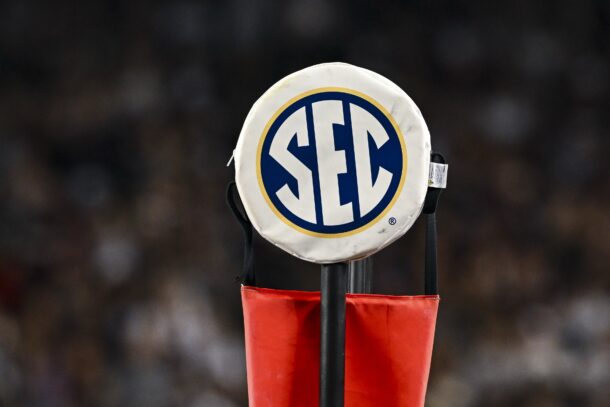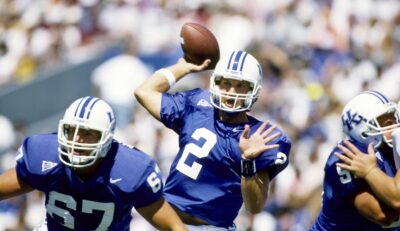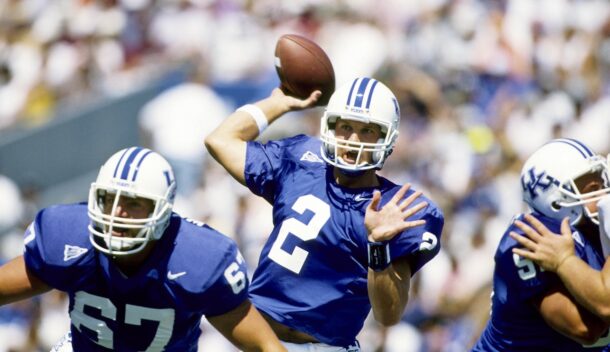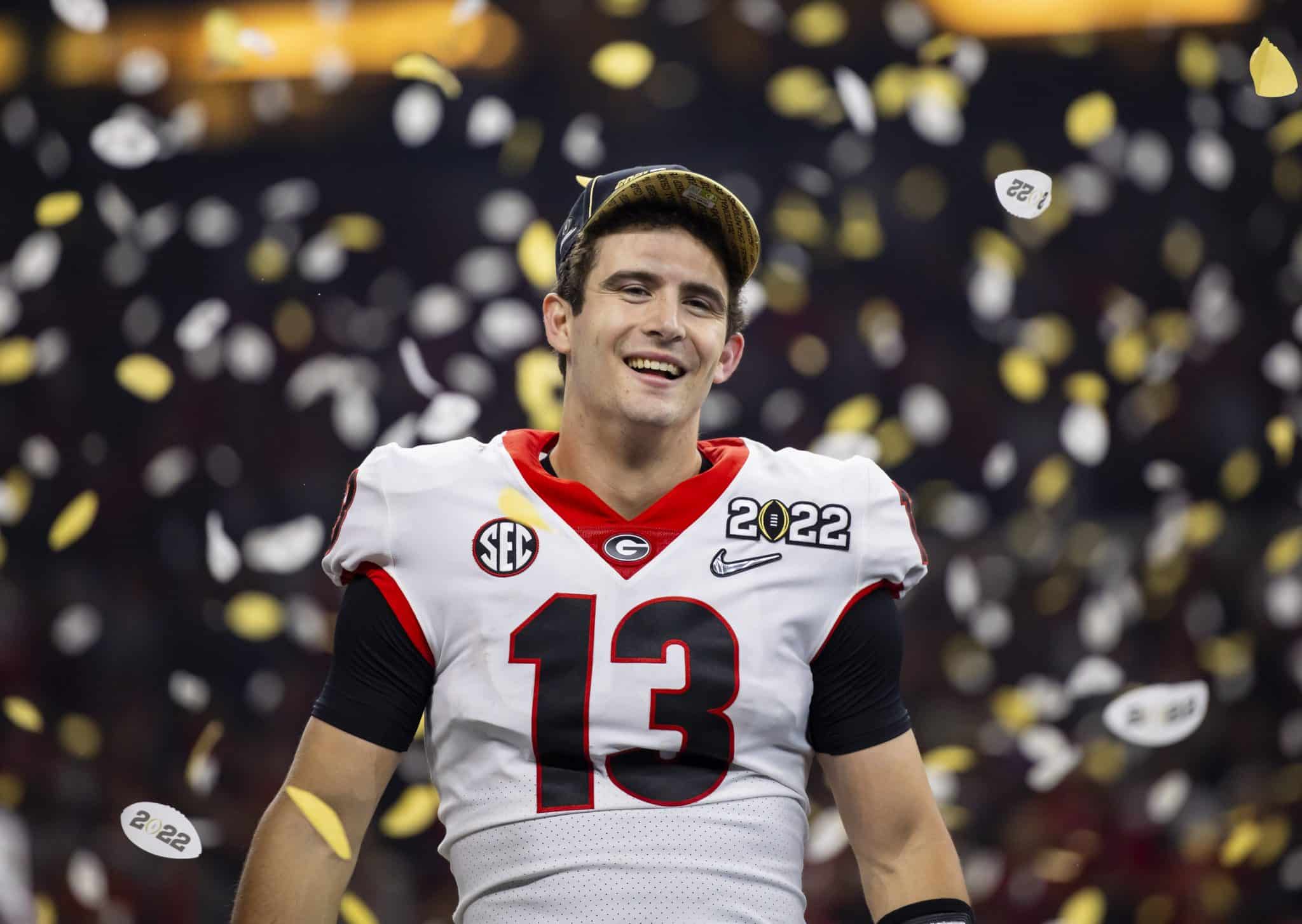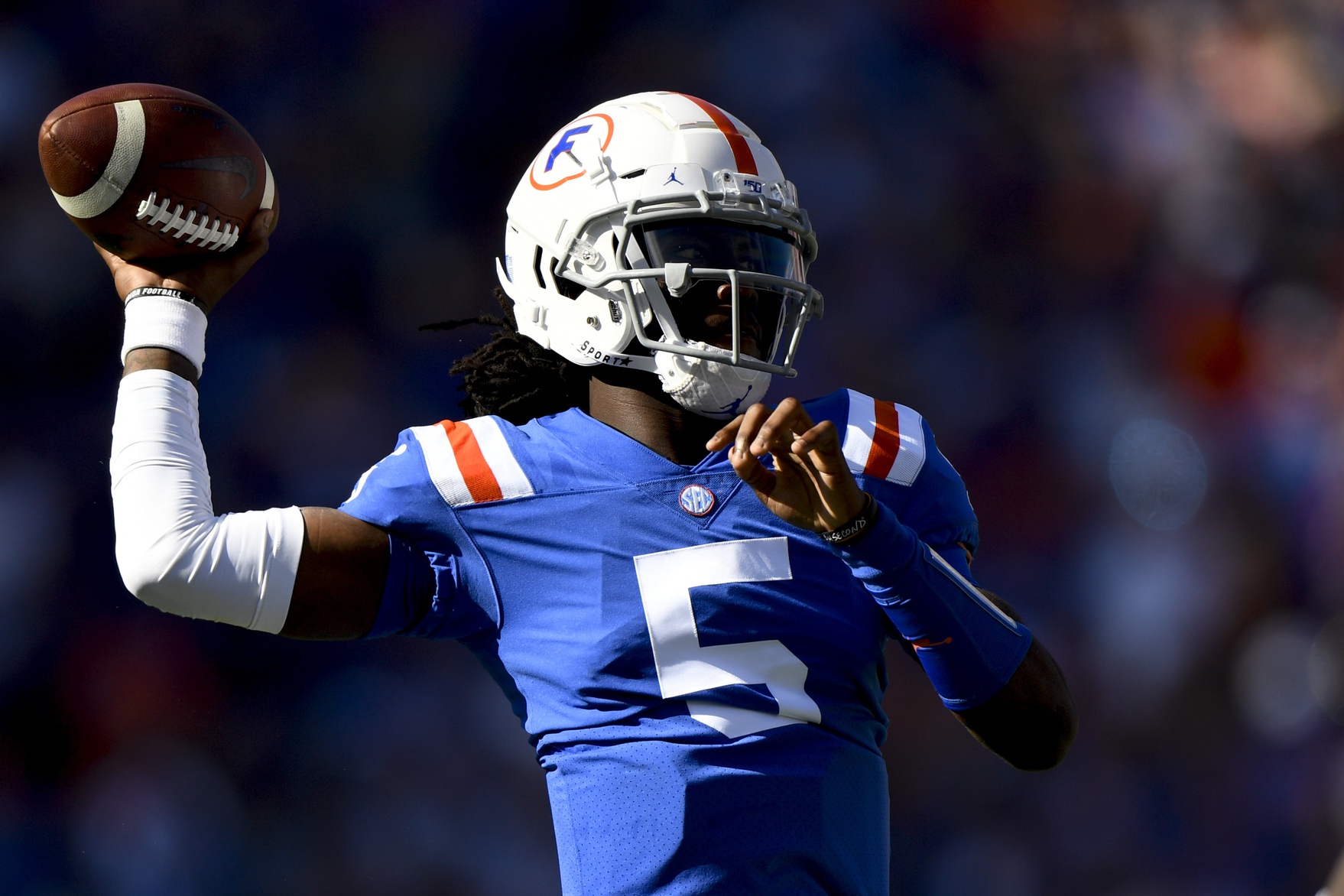
How should we define success for Emory Jones? Here’s a realistic outlook for 2021
It’s inevitable, but in a perfect world, we’d all do Emory Jones a solid and not compare him to Kyle Trask or Tim Tebow.
Besides the fact that Jones doesn’t operate like either one, it doesn’t seem fair to lump him with a couple of guys who rewrote the record books at Florida with Dan Mullen at the controls. If Jones gets off to a comparable start to one of those Florida greats in his first 6 games, so be it. Let the side-by-side graphics loose if you must.
But if we’re talking about what sort of standard Jones has to live up to in order to be considered successful in 2021, both of those signal-callers should be stricken from the record. It’s pretty simple. Trask just led the No. 1 passing offense in America, and he led FBS in total touchdowns. Jones can aspire to do the same, but externally, that’s not really a bar we should set for him. He’s not throwing to the likes of Kyle Pitts, Kadarius Toney and Trevon Grimes. That in itself makes this a bit of an apples to oranges comparison because it’s unlikely the offense will be built the way it was with Trask.
And sure, Jones might operate in more of Mullen’s prototypical offense like Tebow did, but 99.9999% (roughly) of first-time SEC starting quarterbacks don’t rack up 50 touchdowns and win a Heisman from the jump. You know, just in case that wasn’t obvious.
So what should success look like for Jones if Trask and Tebow aren’t fair comps? I’m glad you asked.
Beat Georgia
Let’s just get that out of the way.
It’s not necessarily what makes a successful Florida quarterback. Treon Harris and his 3-for-6, 27-yard passing performance in the 38-20 win in 2014 are proof of that. But is it important? Of course it is, especially during a time when beating Georgia usually means taking down a top-10 team and getting a signature win. Just because this prerequisite is obvious doesn’t mean it’s wrong.
At the same time, if Jones balls out and loses a 48-45 game, that won’t make him an unsuccessful quarterback. We know who’s getting the blame if that happens. (His last name starts with a “G” and ends with “rantham.”)
Top 4 in SEC in yards/attempt
Jones has to become a more efficient passer. That’s true no matter who you want to compare him to. You don’t get to the places Florida wants to go without having someone who can be accurate and stretch the field. In a limited sample size in 2020, Jones had 46.7% accuracy and 32.1% depth-adjusted accuracy (via @SEC_StatCat). That’s meant to show numbers regardless of the talent at the pass-catcher position.
In 2020, Jones averaged 6.9 yards per attempt and he completed 18-of-32 passes (56%). From an efficiency standpoint, Jones’ numbers were most comparable to Bo Nix. Granted, the former never got to start and make in-game adjustments while the latter did. Regardless, that’s the most obvious area where Jones needs to improve.
What does being in the top 4 in the SEC in that department usually entail? Here’s the look at the SEC quarterback who ranked No. 4 in yards/attempt in the Playoff era:
- 2014 — Bo Wallace (Ole Miss), 8.4
- 2015 — Jake Coker (Alabama), 7.9
- 2016 — Sean White (Auburn), 8.1
- 2017 — Danny Etling (LSU), 9.0
- 2018 — Jake Bentley (South Carolina), 8.2
- 2019 — Kyle Trask (Florida), 8.3
- 2020 — Feleipe Franks (Arkansas), 8.9
How fitting that Trask and Franks are the last 2 quarterbacks to finish No. 4 in the SEC in yards/attempt. A good benchmark for Jones’ efficiency would be right around that 8.4 yards/attempt range. That’s not asking for too much. That 2019 version of Trask with 8.3 yards per attempt got Florida a New Year’s 6 bowl victory. Combine that with what Jones should be able to do as a runner, and that’s going to set up Florida well.
Speaking of those running abilities …
Top 2 among SEC quarterbacks in rushing
Among SEC quarterbacks regardless of snap count in 2020, Jones owned the league’s top run grade (PFF). He averaged basically the same amount of yards as a runner (6.8) as he did as a passer (6.9). Again, it’s a small sample size (just 32 carries), but the early returns were promising:
Highest rushing grade from non-RBs last season:
1. Emory Jones, Florida – 86.1
2. Justin Fields, Ohio St – 84.3
3. Malik Willis, Liberty – 83.1 pic.twitter.com/6oN2GwWG5K— PFF Draft (@PFF_College) February 4, 2021
Does that mean we should expect Jones to be the top rushing quarterback in the nation? I wouldn’t rule it out, though I certainly wouldn’t bet on that. We’re coming off a year in which Mullen’s quarterback led the nation in pass attempts. Jones isn’t going to be treated like the far-less-mobile Trask, nor is he going to be treated like a far-less-capable passer like Nick Fitzgerald. Even if Jones throws with a frequency closer to Fitzgerald (26 attempts per game in 2 years as Mullen’s starter at MSU) than Trask (36 attempts per game in 2020), those attempts will still feel different because Jones will be asked to push the ball downfield more.
The designed runs? Those will be plentiful, as they should be.
These are the types of plays where Jones can really grind away at a defense:
“Everyone in the stadium knows what’s coming” Emory Jones scrambles for a 17 yard pickup pic.twitter.com/oOvWlJmKXl
— libgator (@lib_gator) December 31, 2019
It’s no secret that’ll be a bigger part of Mullen’s offense than it was the last 3 years. How many designed runs per game will Jones have? That remains to be seen. Game flow could dictate that. Florida now has the ability to imposing its will that way, which is different than the first 3 seasons of the Mullen era. Franks could capitalize on a weakness, but he didn’t make game-breaking plays with his legs like Jones can.
What would it take for Jones to finish in the top 2 in rushing among SEC quarterbacks, you ask? And why not the top 1?
Well, last year, Matt Corral led the way in the SEC with 506 rushing yards. That was good for No. 8 among Power 5 quarterbacks. He was well ahead of Terry Wilson and Bo Nix, who had 424 yards and 388 yards, respectively. Corral and Nix are back, and a full year of Luke Doty at South Carolina could make him a candidate, as well as presumed Texas A&M starter Haynes King.
But Jones, if he stays healthy, should be in that 600-700 yard range. Florida hasn’t had a quarterback run for 500 yards since, well, No. 15. Tebow also averaged around 200 carries per season as a starter, which (probably) won’t be how Jones is utilized with his frame.
If Jones were to finish in the top 2 in rushing yards among SEC quarterbacks, it would also probably be a sign that he didn’t take too many sacks. As ridiculous as it is that sacks taken count against a quarterback’s rushing yards in college, it is another indicator of efficiency, albeit a less direct one.
One thing that seems like a lock? Jones is going to give Florida a much more even split of pass-run production compared to last year’s nearly 3-1 split.
Top 25 offense
Florida finished inside the top 30 in scoring in each of Mullen’s first 3 seasons in Gainesville. That’s night and day compared to Jim McElwain’s 3 offenses that all finished No. 100 or worse.
Obviously, not all of this will be on Jones. If an offensive line with 3 returning starters struggles to run-block again, that doesn’t bode well, and if Florida’s new batch of starting pass-catchers plays like it did in the Cotton Bowl, an offensive regression is inevitable.
Perhaps that’s inevitable even if Florida doesn’t fall short in those areas. We’re talking about a group that ranks No. 125 among 127 FBS teams in percentage of returning offensive production. Jones is going to be surrounded by a bunch of unproven players, though that doesn’t mean he’s destined to struggle. That number could be an afterthought if Jones takes off with 5-star transfer Demarkcus Bowman, and it would help if former 5-star Penn State transfer Justin Shorter became a go-to target.
Last year, a scoring offense in the top 25 meant averaging 34 points per game. Florida could theoretically drop by nearly a touchdown per game and earn a better AP Top 25 finish than it did in 2020. That involves things like not being a defensive train wreck (most of the time), holding on to the football on a potential game-winning drive and above all else, it involves not throwing a shoe.
Sorry. Had to.
A legitimate argument for All-SEC at season’s end
At best, Jones could be a third-team All-SEC selection in the preseason, though I wouldn’t bank on that. Remember, that’s based on what we’ve already seen a player do. As I often say, Tua Tagovailoa wasn’t even one of the 3 preseason selections in 2018 after “2nd-and-26” happened. Jones shouldn’t beat out Corral or JT Daniels for a preseason honor, which almost always goes to returning starting quarterbacks.
Consider that my way of saying, no, don’t take it personally when Nix is wrongfully given the third-team All-SEC honor in the preseason.
What’s more important is who earns the award at season’s end. Trask was Florida’s first quarterback to earn All-SEC honors at season’s end since, well, No. 15. Again, Jones shouldn’t be evaluated under the premise that he needs to follow in either of their footsteps. But if we’re at least talking about Jones having an argument to be considered a top-2 SEC quarterback in December, it’s safe to say things have gone well for Florida.
Of the 22 All-SEC quarterbacks during the 2010s, 68% of them led teams that won at least 10 games. And the ones who didn’t were Johnny Manziel, Dak Prescott, Drew Lock, Aaron Murray, Josh Dobbs and Chad Kelly. Those guys were all successful SEC quarterbacks by any metric.
In a perfect world for Florida, Jones would instead join the 68%. Could he? Absolutely. He’s had 3 years to learn from one of the best offensive minds in the sport. The physical tools aren’t lacking, either. Becoming an elite SEC quarterback is easier said than done, though.
Jones path to success isn’t a given. But it’s definitely there.
Finally, it’s his time to embark.
Connor O'Gara is the senior national columnist for Saturday Down South. He's a member of the Football Writers Association of America. After spending his entire life living in B1G country, he moved to the South in 2015.
